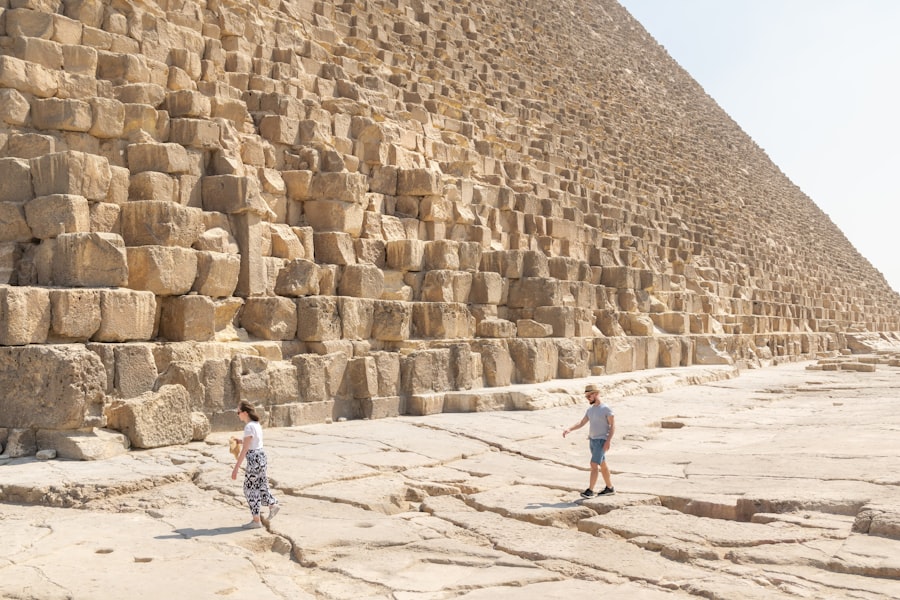When you think of iconic symbols in popular culture, two figures that immediately come to mind are Godzilla and the Empire State Building. Godzilla, the colossal creature that first emerged from Japanese cinema in 1954, has become a global icon, representing not just a monster but a complex commentary on humanity’s relationship with nature and technology. The Empire State Building, on the other hand, stands as a testament to human ingenuity and ambition, a towering achievement of architecture that has graced the New York skyline since its completion in 1931.
The juxtaposition of these two titans—one a monstrous force of nature and the other a pinnacle of human achievement—creates a fascinating narrative that explores themes of destruction, resilience, and the interplay between man and monster. As you delve deeper into this relationship, you will discover how Godzilla’s rampages often lead him to clash with urban landscapes, with the Empire State Building frequently serving as a backdrop for his destructive escapades. This iconic structure not only represents the heights of human achievement but also becomes a symbol of vulnerability in the face of nature’s wrath.
The Empire State Building, with its Art Deco elegance, stands tall against the chaos unleashed by Godzilla, embodying the struggle between civilization and the primal forces that threaten it. This article will explore the historical context of Godzilla in popular culture, the architectural significance of the Empire State Building, and the broader implications of their interactions.
Summary
- Godzilla and the Empire State Building have a long-standing cultural connection, stemming from the 1954 film “Godzilla” where the iconic building was destroyed by the monster.
- Godzilla has become a symbol of Japanese resilience and a metaphor for the destructive power of nuclear weapons, making it a significant figure in popular culture.
- The Empire State Building is an architectural marvel, known for its Art Deco design and standing as a symbol of New York City and American ambition.
- Godzilla’s impact on Japanese culture is profound, with the monster representing the country’s fears and anxieties, as well as its ability to overcome adversity.
- The symbolism of Godzilla vs. the Empire State Building reflects the clash between Eastern and Western cultures, as well as the struggle between nature and human achievement.
Historical Context: Godzilla in Popular Culture
Godzilla’s origins are deeply rooted in the socio-political climate of post-war Japan. Emerging from the ashes of World War II, Godzilla was conceived as a metaphor for nuclear devastation and the anxieties surrounding technological advancement. The creature’s first appearance in “Gojira” (1954) was not merely an entertainment spectacle; it was a poignant reflection on the horrors of atomic warfare and its lasting impact on humanity.
As you explore Godzilla’s evolution over the decades, you will see how he has transformed from a terrifying symbol of destruction into a more complex character that embodies both fear and empathy. In the decades that followed, Godzilla became a staple of global pop culture, spawning numerous films, television series, and merchandise. His presence transcended borders, resonating with audiences worldwide.
The character has been reimagined in various forms, from the campy antics of the 1970s to the darker interpretations seen in modern films. Each iteration reflects changing societal fears and aspirations, making Godzilla a mirror to our collective consciousness. As you consider his impact on popular culture, it becomes clear that Godzilla is not just a monster; he is a cultural phenomenon that continues to evolve alongside humanity.
The Architecture of the Empire State Building

The Empire State Building is more than just a skyscraper; it is an architectural marvel that has become synonymous with New York City itself. Completed in 1931 during the Great Depression, this Art Deco masterpiece was once the tallest building in the world, standing at an impressive 1,454 feet including its antenna. Designed by William F. Lamb, the building’s sleek lines and ornate detailing reflect the optimism and ambition of an era marked by economic hardship. As you gaze upon its towering presence, you cannot help but feel a sense of awe at what humanity can achieve when driven by vision and determination.
The building’s design incorporates elements that were revolutionary for its time, including its steel frame construction and innovative use of elevators. The observation decks offer breathtaking views of the cityscape, drawing millions of visitors each year who come to experience its grandeur. The Empire State Building has also been featured in countless films and television shows, solidifying its status as an enduring symbol of American culture.
Its architectural significance extends beyond aesthetics; it represents resilience and hope in the face of adversity, much like the spirit embodied by Godzilla.
Godzilla’s Impact on Japanese Culture
| Aspect | Impact |
|---|---|
| Film Industry | Godzilla franchise has been a significant part of Japanese film industry, influencing the genre of monster movies. |
| Pop Culture | Godzilla has become an iconic figure in Japanese pop culture, appearing in various forms of media such as video games, comics, and merchandise. |
| Tourism | Godzilla has become a tourist attraction in Japan, with dedicated attractions and events related to the monster. |
| Social Commentary | Godzilla films often reflect social and political issues, providing a platform for commentary on Japanese society. |
Godzilla’s influence on Japanese culture is profound and multifaceted. Initially conceived as a cautionary tale about nuclear power and environmental destruction, Godzilla has evolved into a cultural icon that resonates deeply with Japanese identity. The creature embodies both fear and fascination, reflecting Japan’s historical struggles with natural disasters and technological advancements.
As you explore this impact further, you will find that Godzilla serves as a reminder of humanity’s vulnerability in the face of nature’s might. Moreover, Godzilla has inspired generations of filmmakers, artists, and writers in Japan. His presence has permeated various forms of media, from anime to literature, often serving as a vehicle for social commentary.
The character has also fostered a sense of national pride; he is uniquely Japanese yet universally recognised. As you consider Godzilla’s role in shaping contemporary Japanese culture, it becomes evident that he is not merely a monster but a complex symbol that encapsulates both national trauma and resilience.
The clash between Godzilla and the Empire State Building is rich with symbolism that speaks to broader themes within society. On one hand, Godzilla represents nature’s uncontrollable power—a force that can obliterate human constructs with ease. On the other hand, the Empire State Building stands as a testament to human achievement and ambition.
This dichotomy highlights the tension between man-made progress and natural forces that can disrupt it at any moment. When Godzilla rampages through New York City, targeting landmarks like the Empire State Building, it serves as a metaphor for humanity’s hubris in believing it can conquer nature through technology and architecture. The destruction wrought by Godzilla forces us to confront our vulnerabilities and reconsider our relationship with the environment.
In this way, their interactions become a powerful commentary on the fragility of human existence amidst towering achievements.
Comparing the Size and Scale of Godzilla and the Empire State Building
The Monstrous Proportions of Godzilla
In various films, Godzilla has been depicted as towering over skyscrapers, often reaching heights of over 300 feet—far surpassing even the tallest buildings in New York City. This stark contrast serves to emphasise his monstrous nature while simultaneously highlighting humanity’s limitations in creating structures that can withstand such overwhelming force.
The Empire State Building: A Testament to Human Achievement
The Empire State Building itself stands at 1,454 feet when including its antenna; however, when compared to Godzilla’s colossal stature in film adaptations, it becomes clear that no matter how grand human achievements may be, they are ultimately dwarfed by nature’s might.
A Reflection of Humanity’s Place in the Natural World
This comparison invites reflection on our place within the natural world—reminding us that despite our technological advancements and architectural marvels, we remain vulnerable to forces beyond our control.
The Cinematic Representation of Godzilla and the Empire State Building

The cinematic portrayals of both Godzilla and the Empire State Building have contributed significantly to their iconic status. In numerous films featuring Godzilla, scenes depicting his rampage through urban landscapes often showcase him towering over buildings like the Empire State Building. These moments are not merely visual spectacles; they serve to evoke feelings of awe and terror while reinforcing themes of destruction and resilience.
Directors have employed various techniques to create these memorable scenes—from practical effects to CGI—ensuring that each encounter between Godzilla and urban structures leaves an indelible mark on viewers’ minds. The Empire State Building often becomes a focal point during these confrontations; its destruction signifies not just physical damage but also a deeper commentary on humanity’s fragility in an ever-changing world. As you watch these films unfold, you will find yourself drawn into this intricate dance between man-made marvels and primal forces.
The Enduring Legacy of Godzilla and the Empire State Building
As you reflect on the enduring legacy of both Godzilla and the Empire State Building, it becomes evident that their significance extends far beyond their individual narratives. Together, they encapsulate themes of ambition, vulnerability, and resilience—reminding us of our place within a world shaped by both human ingenuity and natural forces. Godzilla serves as a cautionary tale about our relationship with technology and nature while the Empire State Building stands as a testament to what humanity can achieve when driven by vision.
Their interactions continue to resonate with audiences around the globe, sparking conversations about our responsibilities towards each other and our environment. In an age where climate change and technological advancements dominate discourse, these symbols remind us that we must navigate our path with humility and respect for nature’s power. Ultimately, both Godzilla and the Empire State Building will remain etched in our collective consciousness as enduring icons—each representing different facets of our shared human experience.
